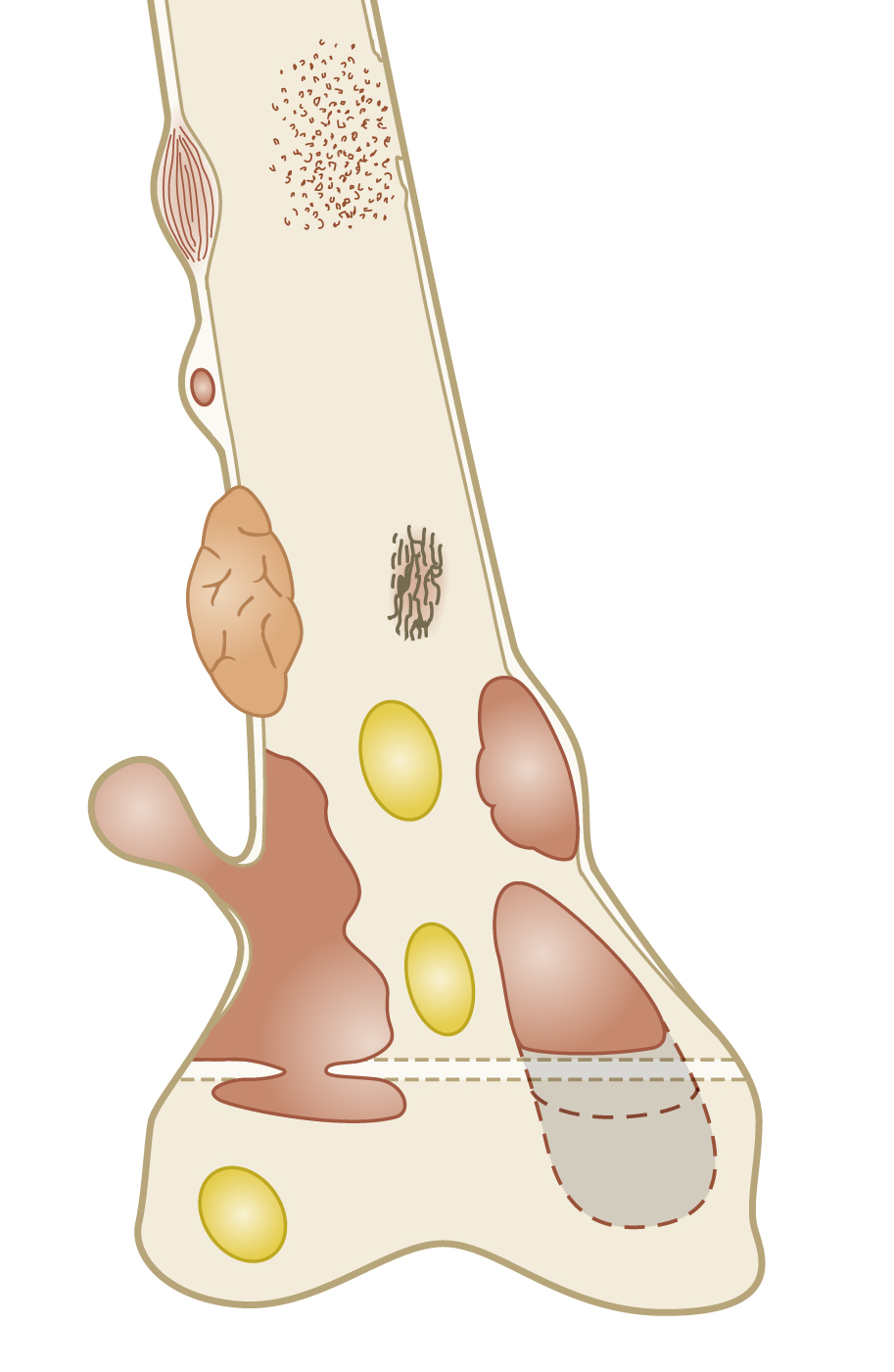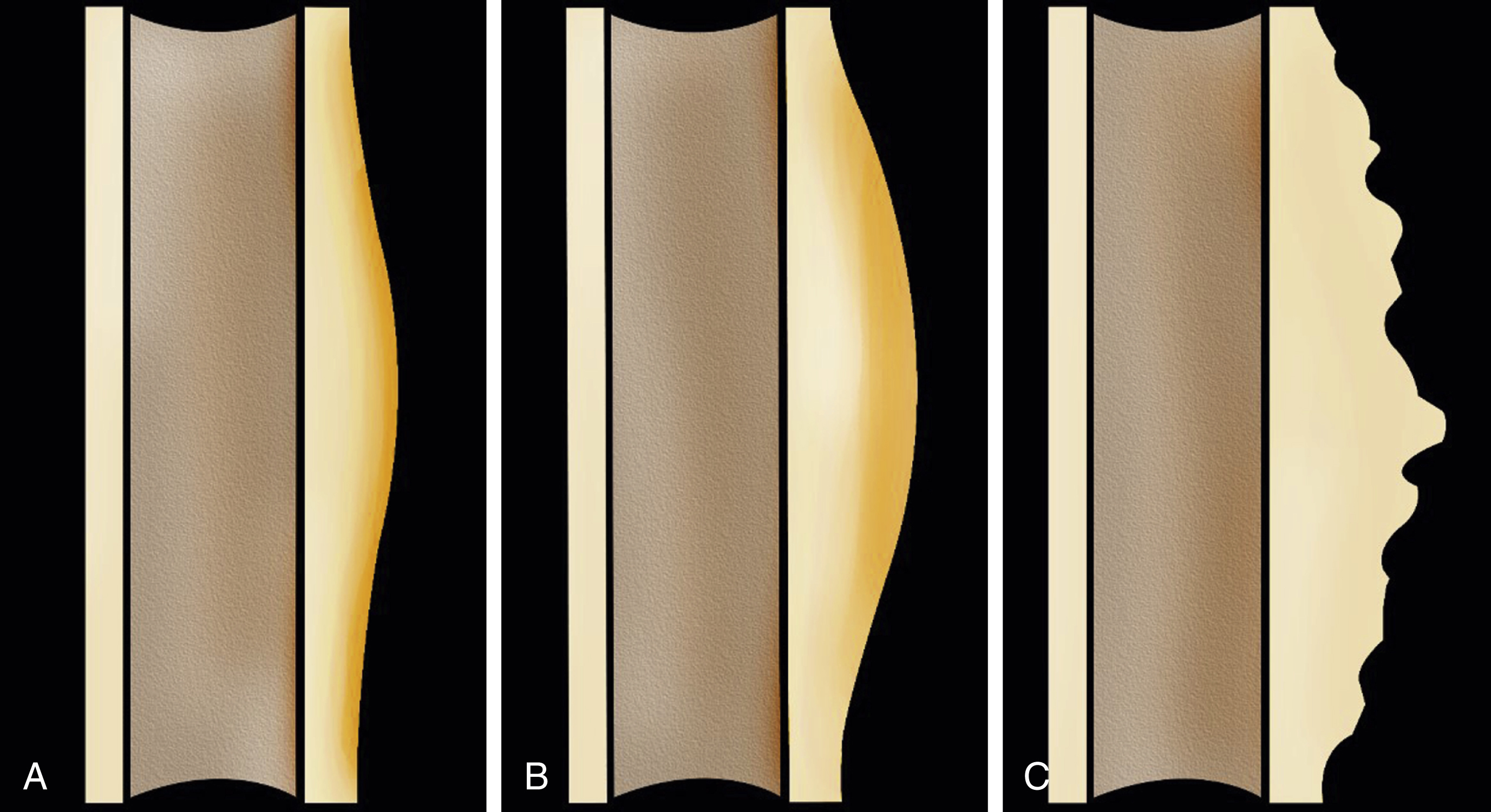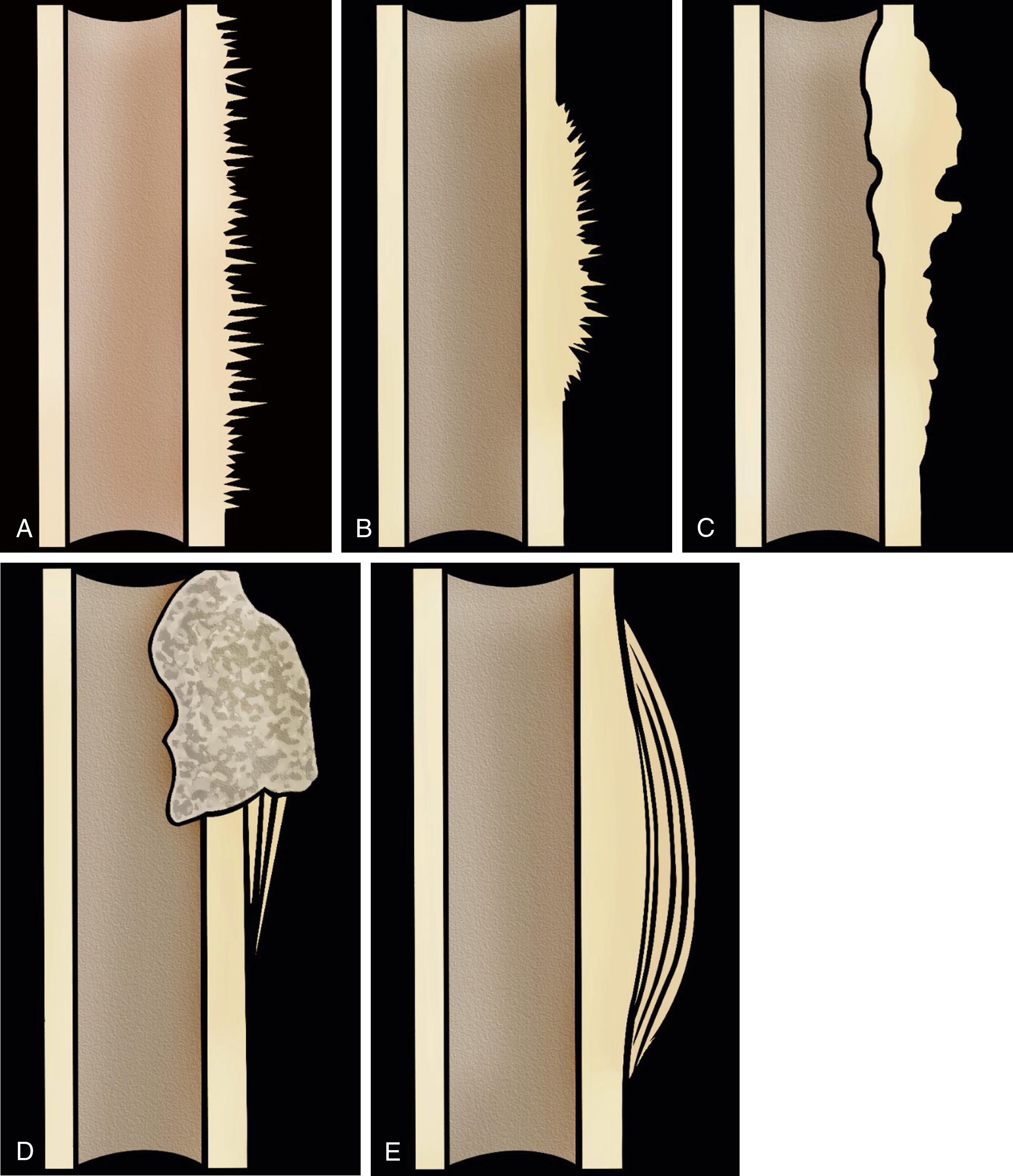Physical Address
304 North Cardinal St.
Dorchester Center, MA 02124
“Knowledge is power…knowledge is safety…knowledge is happiness.” —Thomas Jefferson
Bone lesions are a frequently encountered diagnostic challenge faced by radiologists in the evaluation of pediatric and adolescent patients. Up to 42% of all bone lesions are detected in the first two decades of life, including benign and malignant neoplasms. Nine percent of bone lesions occur in the first decade of life, and approximately 33% in the second.
More than half of all childhood bone neoplasms are benign, with metastatic neuroblastoma being the most common malignant bone lesion occurring in the first two decades of life. The radiologist’s primary goal when encountering a bone lesion in a radiographic examination of a pediatric or adolescent patient is to generate a succinct, logical differential diagnosis based on the imaging characteristics and available clinical information.
A critical component for the generation of an accurate differential diagnosis is distinguishing aggressive osseous lesions from benign “do not touch” lesions and tumor-like lesions, which can be reactive or developmental in etiology.
Aggressive primary bone neoplasms are rare in infants and toddlers but account for a significant proportion of childhood malignancies. The most common primary malignant bone lesions in school-aged children and adolescents are osteosarcoma and Ewing sarcoma (ES). These aggressive pediatric bone malignancies require further evaluation with cross-sectional imaging, as well as image-guided or surgical biopsy.
The most common true benign bone neoplasms in children and adolescents are osteochondroma, osteoid osteoma, osteoblastoma, enchondroma, chondromyxoid fibroma (CMF), and chondroblastoma.
The most common benign tumor-like bone lesions in childhood and adolescence are fibroxanthomas (fibrous cortical defect, nonossifying fibroma [NOF]), simple (unicameral) bone cyst (UBC), aneurysmal bone cyst (ABC), distal femoral cortical irregularity, fibrous dysplasia (FD), and Langerhans cell histiocytosis (LCH).
Radiographs remain the primary imaging modality for the initial evaluation of pediatric bone lesions. Radiographs provide several key characteristics of a lesion, including: (1) a lesion’s location within the host bone; (2) lesion-host bone interface/zone of transition; (3) host bone reaction to the lesion; (4) lesion matrix production; and (5) potential cortical destruction and resulting secondary soft tissue mass.
These key radiographic imaging features, in conjunction with the patient’s chronological age, remain the cornerstones in the differentiation of aggressive and nonaggressive pediatric bone lesions and tumor-like conditions, as well as the generation of an accurate and concise differential diagnosis.
The correct radiographic interpretation of pediatric bone lesions is important because classic benign, nonaggressive pediatric osseous lesions require neither additional cross-sectional imaging work-up nor subsequent biopsy.
Many aggressive and nonaggressive bone neoplasms occur in specific age groups. In addition, certain pediatric osseous lesions frequently occur in characteristic host bones of the axial and appendicular skeleton, as well as specific segments within these host bones. Therefore the patient’s chronological age, host bone, and lesion location within the particular affected host bone are critical factors in the imaging evaluation of pediatric and adolescent bone lesions.
Additional clinical information can also prove invaluable in the imaging evaluation of bone lesions in young patients. The presence or absence of fever, white blood cell count, differential, and erythrocyte sedimentation rate (ESR) are also important pieces of clinical information that can assist in honing the differential diagnosis of a pediatric bone lesion.White blood cell count and ESR are often elevated in the setting of osteomyelitis but can also be elevated in acute leukemia, lymphoma, ES, and LCH.
Cross-sectional imaging with magnetic resonance imaging (MRI) and/or computed tomography (CT) can provide additional valuable imaging evaluation of a bone lesion if the diagnosis remains uncertain after the initial radiographic examination. MRI evaluation is critical for the evaluation of potential skip lesions, soft tissue extension, integrity of adjacent neuromuscular structures, initial staging, and preoperative planning for malignant osseous lesions. CT, with its high spatial resolution, can provide additional information regarding a lesion’s potential internal matrix production, associated cortical erosion/disruption, or risk for potential pathological fracture.
Nuclear medicine bone scintigraphy also has a role in the evaluation of metastatic disease and/or multifocal processes, but these examinations are nonspecific. Bone scans are positive for lesions that stimulate reactive new bone formation when technetium-99m-methylene diphosphonate (MDP) is adsorbed onto newly incorporated hydroxyapatite. Lytic lesions, such as LCH, associated with bone destruction are better evaluated with radiographic skeletal surveys. Positron emission tomography (PET)-CT and MIBG (metaiodobenzylguanidine) nuclear medicine scintigraphy are additional useful modalities for the staging and posttherapy surveillance imaging of neuroblastoma.
The goal of this chapter is to put forth a systematic imaging approach for the generation of an accurate, concise differential diagnosis for pediatric and adolescent bone lesions based on the combination of characteristic imaging features of these lesions and vital corroborative clinical information.
In addition, this chapter aims to assist the radiologist in recommending the most effective imaging work-up of pediatric and adolescent bone lesions, as well as finalizing the diagnosis and defining the extent of disease.
The proper imaging evaluation of pediatric bone lesions requires answering the following diagnostic questions ( Box 14.1 ).
What is the age of the patient?
What is the involved host bone?
What segment of the host bone is affected?
What is the host bone reaction to the lesion?
Is the lesion unifocal or part of a multifocal process?
The chronological age of the affected patient is a vital piece of information in the imaging evaluation of pediatric bone lesions. Osseous lesions demonstrate a propensity for affecting certain age ranges in young patients. Establishing the age of the affected child is extremely helpful in beginning to formulate an accurate differential diagnosis.
The age ranges that have been used in the imaging evaluation of pediatric bone lesions are: infants and toddlers (<5 years of age), children (5–10 years of age), and adolescents (10–20 years of age). Specific bone lesions demonstrate peak occurrence rates within these age ranges. Thus the chronological age of an affected patient is critical in narrowing the differential diagnosis of an encountered bone lesion ( Box 14.2 ).
Infants and toddlers: <5 years of age
Children: 5–10 years of age
Adolescents: 10–20 years of age
Primary bone malignancies are extremely rare in infants and toddlers. For example, ES is rarely encountered before the age of 5 years. The differential diagnoses of aggressive bone lesions in infants and toddlers are acute leukemia, multifocal LCH, metastatic lesions secondary to neuroblastoma, and osteomyelitis ( Box 14.3 ).
Acute leukemia
Multifocal Langerhans cell histiocytosis
Metastatic lesions secondary to neuroblastoma
Osteomyelitis
The differential diagnoses for aggressive bone lesions in children (5–10 years old) are ES, monostotic LCH, and osteomyelitis ( Box 14.4 ).
Ewing sarcoma
Monostotic Langerhans cell histiocytosis
Osteomyelitis
The differential diagnoses for an aggressive osseous lesion in adolescents (10–20 years of age) are osteosarcoma, ES, leukemia, primary lymphoma of bone (PLB), and osteomyelitis ( Box 14.5 ).
Osteosarcoma
Ewing sarcoma
Acute leukemia
Primary lymphoma of bone
Osteomyelitis
The differential diagnoses for nonaggressive osseous lesions in the adolescent age range (10–20 years of age) are extensive, including fibroxanthoma (fibrous cortical defect, NOF), osteochondroma, UBC, ABC, chondroblastoma, FD, osteoid osteoma/osteoblastoma, enchondroma, CMF, and periosteal/juxtacortical chondroma ( Box 14.6 ).
Fibroxanthoma
Osteochondroma
Simple/Unicameral bone cyst
Aneurysmal bone cyst
Chondroblastoma
Fibrous dysplasia
Osteoid osteoma/Osteoblastoma
Enchondroma
Chondromyxoid fibroma
Periosteal/Juxtacortical chondroma
Pediatric bone lesions demonstrate a pattern of occurrence within specific host bones. Bone neoplasms and tumor-like lesions have a propensity for development within regions of rapid bone growth and remodeling. Thus lesions tend to occur near the ends of long tubular bones in growing patients. For example, osteosarcoma commonly develops within the metaphyses of the distal femur and proximal tibia in the region of the knee. Osteosarcoma also occurs within the proximal metaphyses of the humerus, which are all regions of rapid bone growth.
Hemangiomas commonly occur in vertebral bodies and are the most common radiolucent lesion of the spine. Other osseous lesions also demonstrate a proclivity for occurring in the spine, such as osteoid osteoma, osteoblastoma, and ABC. However, these lesions occur within the posterior vertebral elements ( Box 14.7 ).
Vertebral Body
Hemangioma
Metastasis
Lymphoma
Posterior Vertebral Elements
Osteoid osteoma/Osteoblastoma
Aneurysmal bone cyst
Radiolucent lesions can occur in the calcaneus of young patients, an epiphyseal equivalent. The differential diagnosis for a radiolucent calcaneal lesion in a young patient includes a UBC, ABC, chondroblastoma, giant cell tumor (GCT), and pseudolesion ( Box 14.8 ).
Simple/Unicameral bone cyst
Aneurysmal bone cyst
Chondroblastoma
Giant cell tumor
Pseudolesion
Intraosseous lipoma
FD, LCH, ES, lymphoma, and osteosarcoma can develop in the ribs of young patients ( Box 14.9 ). However, a healing fracture must be considered in the formulation of a differential diagnosis of any pediatric rib lesion.
Metastasis
Langerhans cell histiocytosis
Fibrous dysplasia
Ewing sarcoma
Lymphoma
Osteosarcoma
Pediatric and adolescent bone lesions also typically occur within certain regions along the longitudinal axis of the host bone ( Fig. 14.1 ).

For example, chondroblastomas classically occur in the epiphysis and epiphyseal equivalents of long bones. Rarely, epiphyseal osteochondroma-like lesions can occur within long bones in the setting of Trevor-Fairbank disease (dysplasia epiphysealis hemimelica) ( Box 14.10 ).
Osteomyelitis (<18 months of age)
Chondroblastoma (open physis)
Giant cell tumor (closed physis, extending from the metaphysis)
Osteoid osteoma (Trevor-Fairbank disease)
Benign UBCs and ABCs, as well as osteochondroma and enchondroma, most commonly occur in the metaphases of long bones. These nonaggressive lesions can demonstrate subsequent migration away from the physes as young patients continue to grow.
GCTs, which can occur in adolescents and young adults, are classically centered in the metaphysis of long tubular bones with subsequent extension into the epiphysis after physeal closure. Osteomyelitis most commonly occurs in the metaphysis of long bones because of the presence of stagnant, slow-flowing blood within multiple looping blood vessels and sinusoids in this region.
Osteosarcoma most commonly occurs in the metaphysis of long bones as well. Therefore the differential diagnosis of an aggressive metaphyseal lesion in a long tubular bone in the second decade of life should include infection and osteosarcoma. Benign fibroxanthomas (fibrous cortical defect/NOFs), as well as CMFs, classically occur in the metaphysis and diametaphysis of long bones ( Box 14.11 ).
Fibroxanthoma: Fibrous cortical defect/nonossifying fibroma
Enchondroma
Simple/Unicameral bone cyst (central)
Aneurysmal bone cyst (eccentric)
Osteochondroma
Osteomyelitis
Giant cell tumor (extending into the epiphysis if physis is closed)
Osteoid osteoma
Metastasis
Primary lymphoma of bone
Osteosarcoma
FD, osteofibrous dysplasia (OFD), and enchondromas can occur in the diametaphysis of long bones. FD and OFD also can occur in the diaphysis of long bones. Small round blue cell malignancies, such as PLB, acute leukemia, and ES, also occur in the diametaphysis and diaphysis of long bones ( Box 14.12 ).
Pediatric bone lesions also demonstrate patterns of occurrence with respect to the axial plane of the host bone. Lesions can be located centrally or eccentrically within the medullary cavity of the host bone. In addition, lesions also can occur within cortical or juxtacortical locations relative to the axial plane of the host bone. Notably, periosteal lesions arise from the deep (cambium) layer of the periosteum and separate the periosteum from the subjacent cortex. Parosteal lesions arise from the outer (fibrous) layer of the periosteum and grow exophytically without elevating the subjacent periosteum from the cortex.
The differential diagnosis of an intramedullary lesion can therefore be narrowed by the identification of the epicenter of these lesions. Central intramedullary lesions of long bones include enchondroma, FD, and UBC ( Box 14.13 ).
Enchondroma
Fibrous dysplasia
Simple/Unicameral bone cyst
Eccentric intramedullary lesions include NOF, CMF, ABC, and GCT ( Box 14.14 ).
Nonossifying fibroma
Chondromyxoid fibroma
Aneurysmal bone cyst
Giant cell tumor
Cortically based lesions include fibrous cortical defect and osteoid osteoma ( Box 14.15 ). Juxtacortical lesions include osteochondroma, periosteal/juxtacortical chondroma, as well as periosteal and parosteal osteosarcoma, which are rare in young patients ( Box 14.16 ).
Fibrous cortical defect
Osteoid osteoma
Periosteal/Juxtacortical chondroma
Osteochondroma
The evaluation of the type of periosteal reaction and periosteal new bone formation, or lack thereof, generated by a host bone in response to the presence of a bone lesion can assist the radiologist in narrowing the differential diagnosis. Periosteal reaction is a nonspecific response by the host bone to the underlying lesion. As the periosteum is irritated, and potentially raised or disrupted by a bone lesion, the host bone forms new bone in an attempt to contain the lesion.
Pediatric and adolescent bone lesions incite relatively early periosteal reactions because the periosteum in young patients demonstrates looser attachment to the underlying host bone in comparison with adults. Aggressive and nonaggressive osseous lesions demonstrate a high degree of overlap in the morphology of periosteal reactions they elicit. Of note, prior studies have demonstrated aggressive osseous lesions can result in benign or no periosteal reactions. Conversely, aggressive morphologies of periosteal reaction do not confirm the presence of an underlying aggressive malignancy.
In general the morphology of the resulting periosteal reaction and the density of the periosteal new bone formation, although nonspecific, are indicators of the rate of growth of the inciting osseous lesion. Slowly expanding, nonaggressive bone lesions typically result in a lack of periosteal reaction or dense, thick periosteal new bone formation from the host bone. Benign forms of periosteal new bone formation can demonstrate a continuous single layer or solid morphologies ( Fig. 14.2 ).

Rapidly growing, aggressive bone lesions classically result in lower-density periosteal new bone formation because the parent bone has less time to lay down new bone to contain a rapidly expanding lesion. Aggressive morphologies of periosteal reaction are spiculated in perpendicular hair-on-end and radial sunburst patterns. These forms of periosteal reaction are due to periosteal new bone formation along innumerable Sharpey fibers, which connect the periosteum to the subjacent cortex.
Lamellated or “onion skin” and disrupted periosteal new bone formation “Codman triangle” morphologies also occur in the setting of aggressive osseous lesions. Osteosarcoma and ES can result in these types of periosteal new bone formation. Notably, nonmalignant processes such as osteomyelitis and thalassemia also can result in aggressive forms of periosteal reaction ( Fig. 14.3 ).

Become a Clinical Tree membership for Full access and enjoy Unlimited articles
If you are a member. Log in here